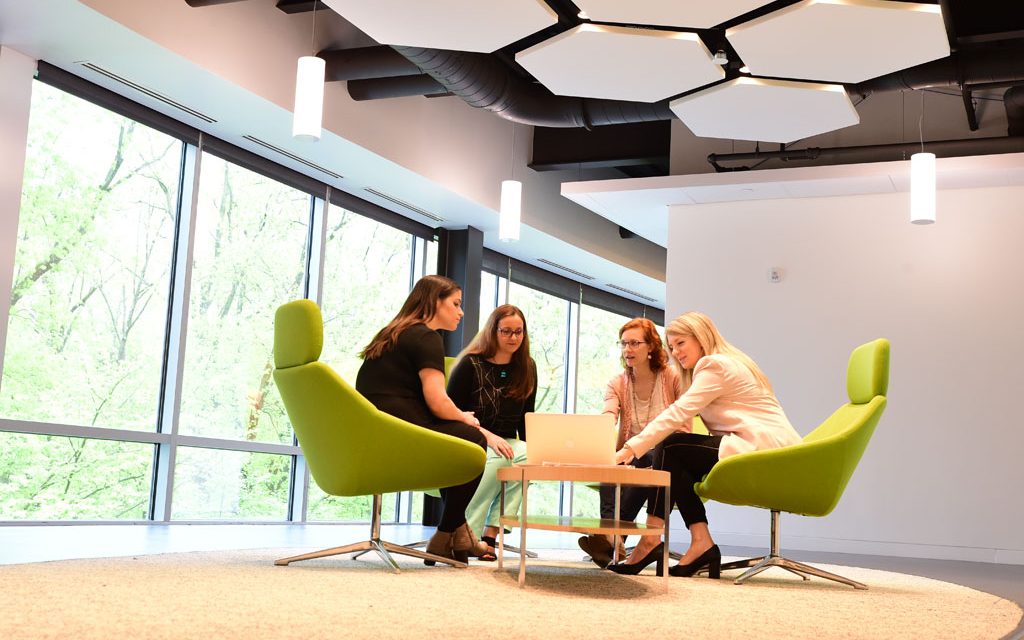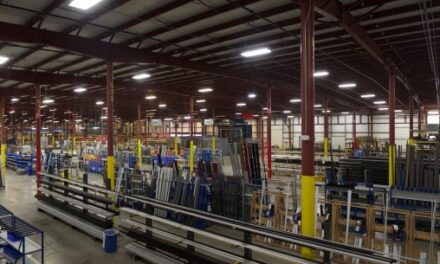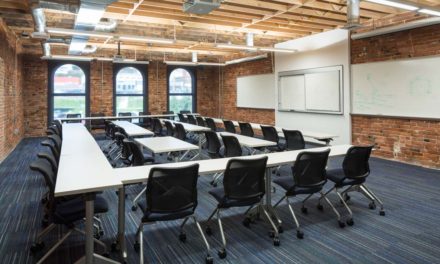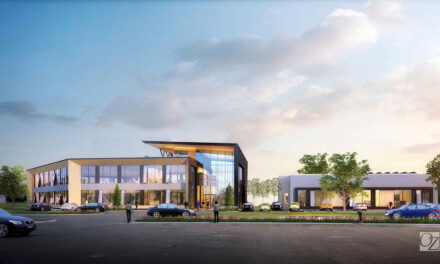The first of its kind based on size and scale, the longitudinal study – conducted by the world’s largest building materials company and manufacturer of innovative material solutions – reveals the collective benefits of a systems-based design approach
MALVERN, Pa. – June 14, 2018 – Saint-Gobain, one of the world’s largest building materials companies and manufacturer of innovative material solutions, in partnership with the University of Oregon’s High Performance Environments Lab (HiPE), announced the results of its North American Headquarters Occupant Comfort Study. The longitudinal study, the first of its kind based on size and scale, revealed that a systems-based design approach utilizing multiple solutions and strategies can have a stronger collective impact on a building’s ability to optimize occupant comfort. The findings also point to the need to move away from a traditional prescriptive design model that relies on one building solution to achieve overall multi-comfort and satisfaction.
Conducted in four phases over 36 months, the study analyzed the occupants’ experience pre-, during and post-renovation during the company’s move from its Valley Forge location to its current Malvern headquarters. The study evaluated Indoor Environmental Quality (IEQ) parameters, including indoor air quality (IAQ), thermal, visual, acoustical and spatial comfort, as well as overall occupant satisfaction, productivity and health.
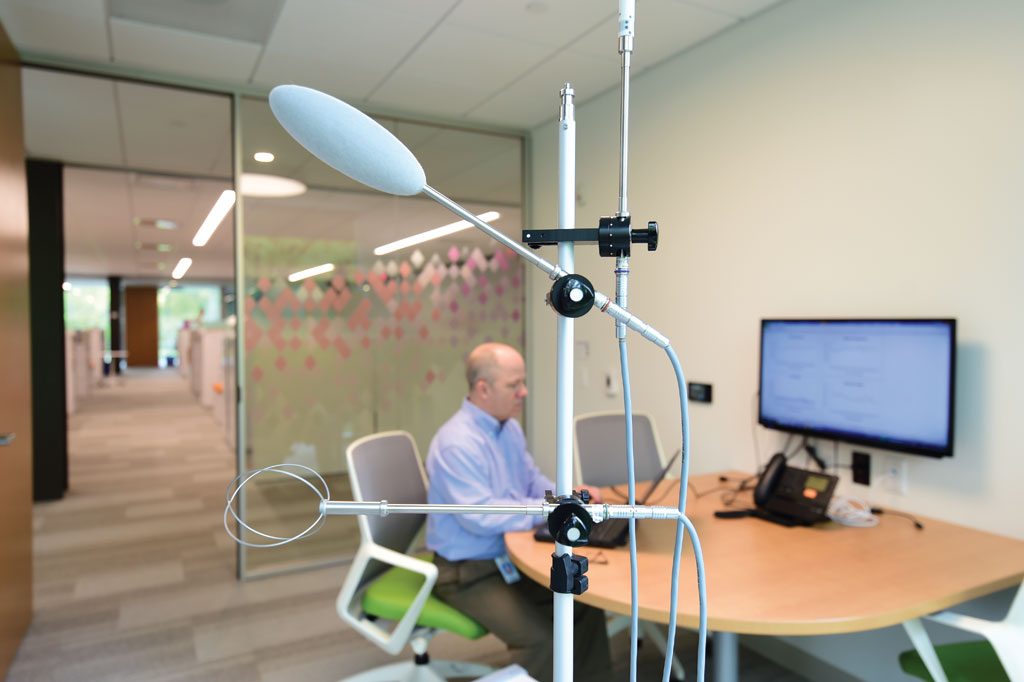
A Living Laboratory: The Saint-Gobain & CertainTeed North American Headquarters
Saint-Gobain decided to move from its Valley Forge location because it did not align with the brand’s purpose of creating great living places that improve daily life. The company wanted to create a headquarters that embodied its values by using its building materials and systems technology to maximize employee comfort, well-being, productivity and collaboration, in order to recruit and retain top talent. Located on a 65-acre campus, the Malvern headquarters was renovated in two simultaneous projects, core and shell and interior fit out, including a 40,000-square-foot addition through the expansion of the existing link between the two buildings. By installing more than 60 sustainable building materials from the Saint-Gobain family of brands, the double LEED Platinum certified headquarters serves as a living laboratory where experts are able to evaluate how a systems-based approach can influence thermal, visual and acoustical comfort and IAQ, as well as overall employee productivity, satisfaction, health and well-being.
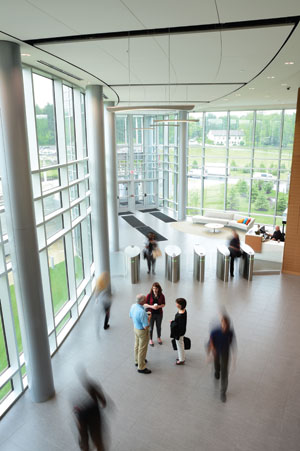 “As the world’s largest building materials company, we determined there was no better way to study the impact of our sustainable building materials on overall occupant comfort than by transforming our own headquarters into a living laboratory where we can measure and receive ongoing feedback that helps spur future product development,” said Tom Kinisky, President and CEO of Saint-Gobain Corporation. “The findings from this study and its focus on the need to prioritize a systems-based approach challenge what we know about conventional building functionality and systems and promise to have a lasting impact on how we create buildings and approach the design process.”
“As the world’s largest building materials company, we determined there was no better way to study the impact of our sustainable building materials on overall occupant comfort than by transforming our own headquarters into a living laboratory where we can measure and receive ongoing feedback that helps spur future product development,” said Tom Kinisky, President and CEO of Saint-Gobain Corporation. “The findings from this study and its focus on the need to prioritize a systems-based approach challenge what we know about conventional building functionality and systems and promise to have a lasting impact on how we create buildings and approach the design process.”
Overall Study Findings
According to the study, approximately 40 percent (38.9%) of employees reported feeling more productive in the Malvern headquarters, and more than half of employees (53.7%) reported an improvement in perceptions of health and well-being. Additionally, more than 75 percent of employees agree about the importance of working in an environmentally friendly building.
“This longitudinal study is the first of its kind and demonstrates the positive ecosystem building materials can create when working together,” said Dr. Ihab Elzeyadi, Professor of Architecture at the University of Oregon and the director of the HiPE lab. “We will continue to collaborate with Saint-Gobain MultiComfort building scientists to investigate solutions that impact occupant satisfaction, well-being and productivity and test new system strategies.”
Beyond improvements in overall comfort, productivity and satisfaction, employees reported improvements in IAQ, thermal, visual and acoustical comfort.
Visual Comfort
Saint-Gobain utilized glazing systems, light-reflective acoustical ceiling systems, interior glass partitions and white interior walls to improve visual comfort. This system included the use of SageGlass LightZone, Saint-Gobain Glass Cool-Lite SKN, Saint-Gobain PRIVA-LITE Laminated Partition Glass and CertainTeed Adagio and Symphony f and m Acoustical Ceilings. As a result of utilizing these materials, employees reported a 56.4 percent improvement in visual comfort, which contributed to a stronger sense of productivity and overall satisfaction. The study also determined a strong correlation between higher employee satisfaction and the amount of light, daylight penetration, access to views, reduced glare and daylighting controls of the all-glass building.
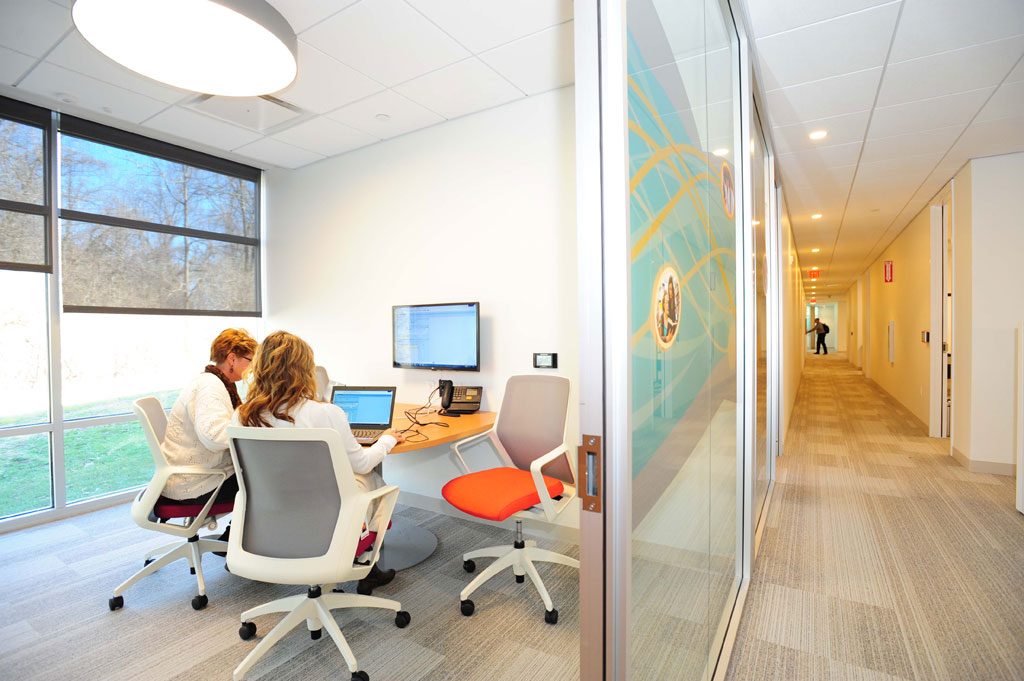
Indoor Air Quality (IAQ)
By selecting low-emitting sustainable building materials and installing building systems to improve air quality, Saint-Gobain created a healthier work environment for its employees. Saint-Gobain building materials contributing to this system include CertainTeed AirRenew® Essential Indoor Air Quality Drywall, Saint-Gobain ADFORS Novelio® CleanAir wall coverings, Novelio® Mold-X wall coverings and many other GREENGUARD-certified Saint-Gobain products that make use of an organic binder. Nearly all employees (91.6%) reported an improvement in how healthy and comfortable they felt in the Malvern headquarters due to changes in IAQ.
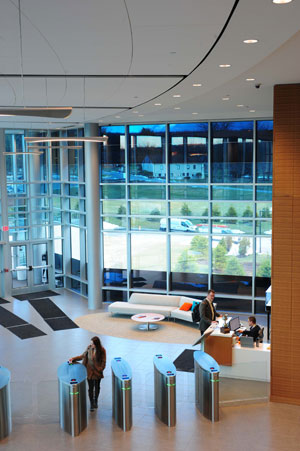
Acoustical Comfort
Saint-Gobain utilized a system of sound-absorbing surfaces, high-performance noise-reducing interior walls and exterior facades as well as a sound-masking system to contribute to improvements in acoustical comfort. Saint-Gobain building materials contributing to this system included CertainTeed Symphony f Fiberglass ceiling tiles, Adagio ceiling tiles, CertainTeed Symphony m mineral fiber ceiling tiles, CertainTeed Gypsum SilentFX® Noise-Reducing Drywall, Gyptone Quattro, CertainTeed Sustainable Insulation® batts, as well as Saint-Gobain Glass PRIVA-LITE laminated glass with switchable privacy (clear/opaque) interlayer and Thela Interior laminated specialty glass. Approximately 45 percent of employees (42.2%) reported an improvement in acoustical comfort. Employees also collectively reported perceiving less noise and more control over their acoustical environments.
Thermal Comfort
A system of Saint-Gobain building materials fundamentally changed the building’s functional design, making the building more efficient than the HVAC system. Saint-Gobain building materials contributing to this system included SageGlass LightZone, Saint-Gobain Glass Climaplus Solar with Saint-Gobain Glass Cool-Lite SKN 163 outer lite and clear inner lite, CertainTeed’s Flintlastic® GTA CoolStar®. (surfaced with highly solar-reflective granules) and FlintBoard® roof insulation. Employees reported a mild improvement (4.8%) in perception of thermal comfort despite significant upgrades to the building’s core and envelope and high-performance heating and cooling system. Based on this mild improvement in thermal comfort, Saint-Gobain brought in a team of experts and will continue to address further challenges.
Implications of the Study
The study results demonstrate that green building design strategies are not one-size-fits-all and building owners and operators, architects and designers need to move away from a traditional prescriptive model that relies on one solution to achieve overall comfort and satisfaction. Data from the study shows that a systems-based approach utilizing multiple solutions and strategies can have a stronger collective impact on a building’s ability to optimize employee comfort by creating a dynamic building that adapts to occupants’ needs as these needs continue to grow and evolve.
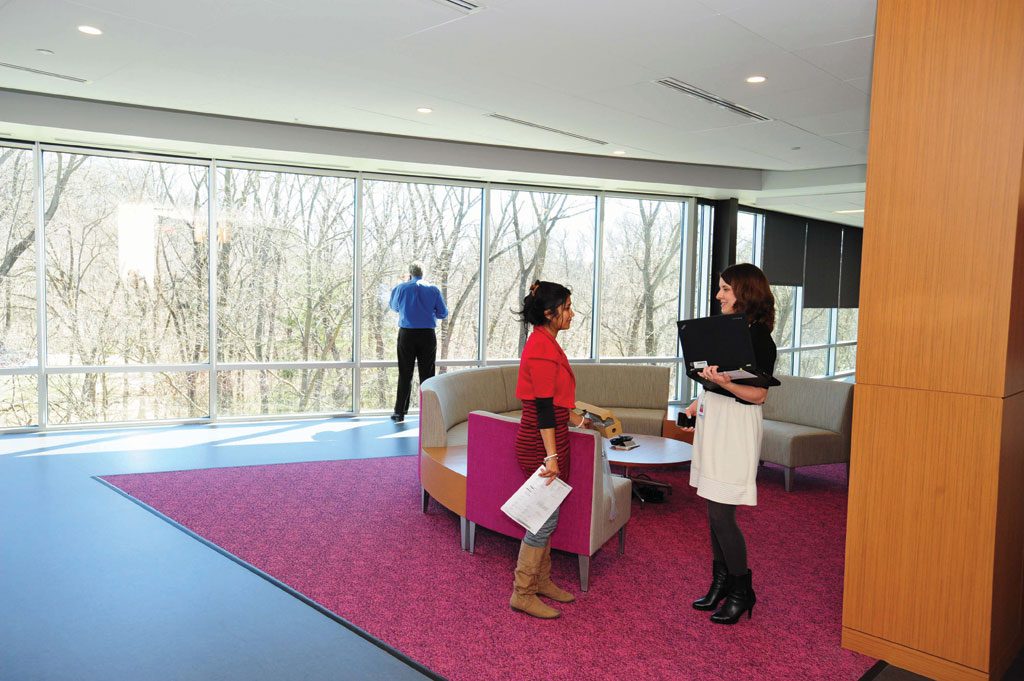
Ongoing Study and Evaluation
Based on these findings, Saint-Gobain’s headquarters will continue to function as a living laboratory where ongoing data collection will be assessed to improve not just building performance, but the human experience of the people working in the space. The feedback received from occupants and visitors will inform how the company enhances and creates building technologies that contribute to a more sustainable built environment.
To download the full study, schedule an AIA or GBCI accredited tour of the headquarters or speak with a building materials expert, please visit: https://www.saint-gobain-northamerica.com/living-laboratory

